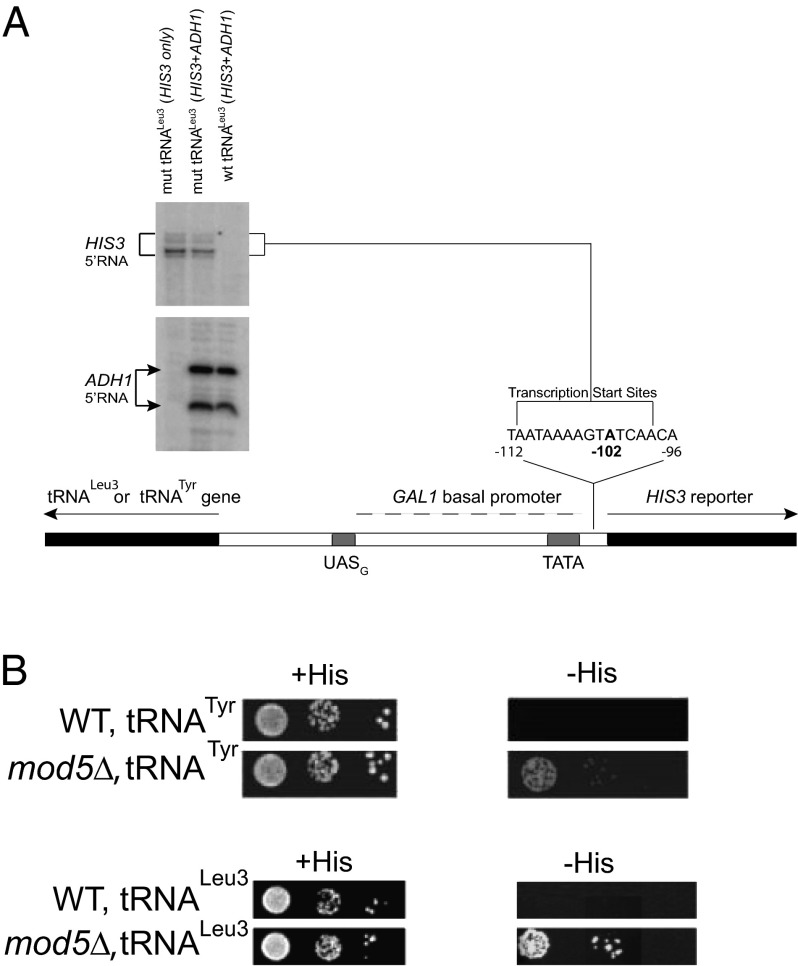Fig. 1.
Deletion of MOD5 releases tgm silencing. (A) Plasmid construct used for testing for tgm silencing. A tRNALeu (SUP53) or tRNATyr (SUP4) gene in WT cells silences the HIS3 reporter gene under the control of a consensus Gal4 UAS and Gal1 basal promoter (2). In the mut tRNALeu version, point mutations in the A and B box promoters of tRNALeu (SUP53; G19C and C56G) eliminate association of all tRNA gene transcription components, and tgm silencing is lost. Primer extension analysis from the HIS3 coding region shows the level and 5′ termini of the HIS3 transcripts, with primer extension on ADH1 mRNA in the same reactions used as an internal quantitation control (2). In the first lane, the ADH1 primer is omitted to verify the identity of the HIS3 products. The major HIS3 transcript 5′ terminus at −102 relative to the translation start is indicated. (B) Cells in which tgm silencing is disrupted by deletion of MOD5 express HIS3 and are able to grow on media lacking histidine (SGR-ura-his). Silencing still requires MOD5 regardless of whether the SUP4 tRNATyr gene or the SUP53 tRNALeu3 gene is present.

